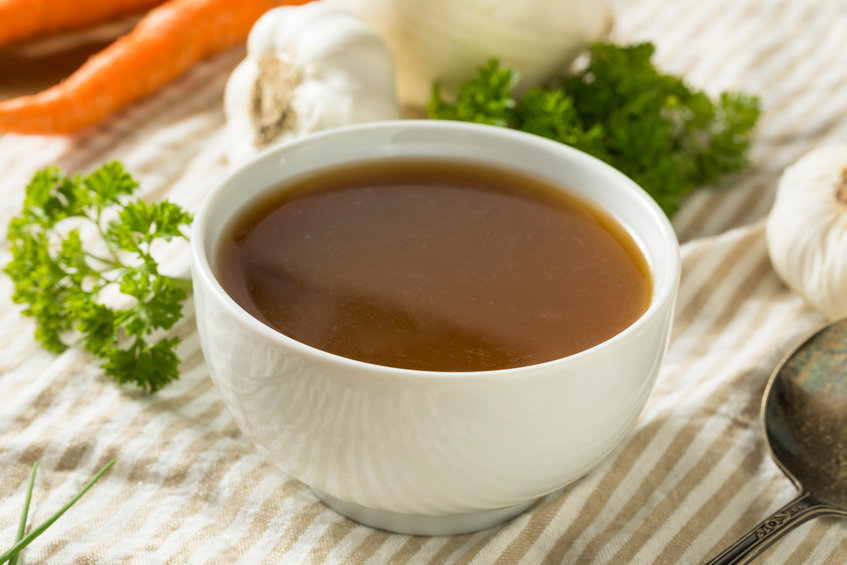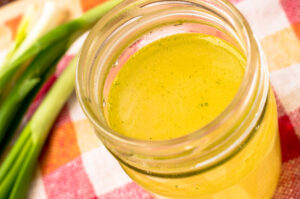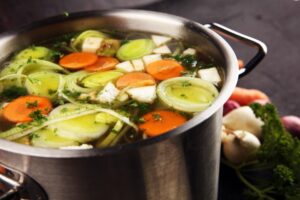Check this out!
There are so many reasons to create and preserve your own homemade beef bone stock! Whether you’re after its deep, nourishing flavor or the health benefits of slow-simmered bones, this recipe walks you through every step—from choosing the right bones to properly roasting them for maximum nutrients. Pressure can it for a shelf-stable pantry staple you’ll use all year long.
I sometimes use affiliate links in my content. This will not cost you anything but it helps me offset my costs to keep creating new canning recipes. Thank you for your support.
By Diane Devereaux | The Canning Diva®
Last updated: October 8, 2025
Key Takeaways
- Learn which beef bones to use and how to roast them for maximum flavor and nutrition.
- Pressure can or freeze this collagen-rich stock for year-round use.
- Perfect base for soups, stews, ramen, or sipping for wellness.
The Nutritional Power and History of Beef Bone Stock
Bone stock—or “bone broth” as it’s often called today—has been cherished for centuries for both its culinary and medicinal benefits. Long before modern medicine, cultures around the world simmered beef bones, marrow, and herbs to create a restorative broth believed to strengthen immunity and promote healing. From French bouillon to ancient Chinese tonics, bone stock has always symbolized nourishment and resilience.
Modern science supports what our ancestors already knew: beef bone stock is rich in collagen, gelatin, and minerals like calcium, magnesium, and phosphorus. These nutrients help maintain healthy joints, improve gut lining integrity, and support glowing skin and restful sleep. It’s one of the most natural ways to fuel your body with what it truly needs.
Canning your homemade beef bone stock adds the final layer of convenience. Once pressure canned, jars of stock are shelf-stable for years, giving you instant access to nutrition and flavor. Whether you sip it warm to aid digestion or use it as a base for gravies, ramen, or stews, every jar represents a wholesome return to traditional, whole-food cooking.
Which Bones Do I Use to Make Beef Bone Stock?
The biggest question I get from readers is, “Which beef bones do I choose to make stock?” While Jessica with The Forked Spoon shares in great detail her version of beef bone stock making, here is my recipe with the amount and type of bones to purchase. My goal is to aide you in creating and preserving my beef bone stock canning recipe and give details on how to properly roast the bones to pull out every flavor and nutrient.
Many people prefer to freeze their bone stock, rather than can it in a jar, however there is no wrong way to preserve your stock. No matter how you choose to preserve beef bone stock, having jars of it handy will aide you in combating sickness by boosting your immune system, will promote joint health and will even promote restful sleep when consumed.
Beef Bone Stock Canning Recipe
makes approx. 7 quarts or 14 pints
This nutrient-packed beef bone stock is a staple in my pantry. I use this stock to create a variety of recipes, most recently, a scrumptious Ramen noodle bowl. You may also heat a small bowl of beef bone stock to help settle a sour stomach or to give you sustenance when ill.
Ingredients
- 2 bone-in beef short ribs (1-1/2 pounds)
- 2 beef shanks or 3 oxtails (3 pounds)
- 4 beef knuckles or femur marrowbones (2-1/2 pounds)
- 2 to 3 neck bones (2 pounds)
- 1 teaspoon coarse sea salt, optional
- 1/2 teaspoon cracked black pepper
- 4 tablespoons extra-virgin olive oil, divided
- 3/4 cup tomato paste (6-ounces)
- 5 carrots, peeled and coarsely chopped
- 4 celery stalks, coarsely chopped
- 3 yellow onions, peeled and quartered
- 2 heads of garlic, excess exterior skin removed, tops chopped off to expose the cloves
- 2 bay leaves
- 1/2 bunch fresh thyme
- 4 sprigs fresh oregano
- 1 tablespoon whole black peppercorns
- 4 gallons cold water (64 cups)
Instructions
- Preheat the oven to 450℉.
- Place the beef short ribs, shanks or oxtails, knuckles or marrowbones, and next bones in a large roasting pan. Sprinkle hones with salt and black pepper. Drizzle with 2 tablespoons of olive oil. Flip the bones over in the pan. Using a butter knife, coat the beef bones evenly with tomato paste.
- Place bones in oven and roast for 15 minutes. Remove from oven and evenly distribute among the bones the carrots, celery, onion quarters, and both garlic heads. Drizzle with remaining 2 tablespoons of olive oil and return back to the oven for an additional 15 minutes.
- In a 16- to 20-quart stockpot, add the roasted bones and vegetable mixture plus all of the drippings from the roasting pan. Use 1/4 cup warm water and spatula to remove any baked-on drippings and scrap every last bit into the stockpot.
- Add the bay leaves, thyme, oregano, peppercorns to the stockpot and mix well. Cover contents of the stockpot with the cold water. Starting on medium heat, bring the stock to a boil. Increase the heat to medium-high and boil gently for 5 minutes. Then reduce the heat and simmer, undisturbed and uncovered, for 6 hours. (You may simmer the stock up to 12 or 24 hours, but please do not leave stove unattended.)
- Using a slotted spoon, remove the bones, meat particles, vegetables, and herbs form the stockpot and discard.
- Strain the stock through a fine-mesh chinois strainer or sieve, capturing the strained stock in a large, clean stockpot.
- Ladle hot, strained stock into hot jars, leaving a 1-inch headspace.
- Wipe the jar rim with a warm washcloth dipped in vinegar. Place lid and ring on each jar and hand tighten.
- Process in a pressure canner at 10 PSI, or according to your canner style and elevation. Process quart jars for 25 minutes and pint jars for 20 minutes.
- FREEZER to JAR PRESERVING TIP: If you do choose to freeze your beef bone stock and it is approaching its short-term freezer shelf-life (4 to 6 months), or you simply need to make more room in your freezer, you may preserve your frozen bone stock in jars. To do so, partially thaw your stock in the refrigerator for 12 to 24 hours before emptying it in to a stockpot on the stove. Using medium heat, complete thawing and heat stock through to a gentle simmer. Then follow the instructions below being sure to skip to Step #7 so you may preserve the stock in jars for long-term storage (up to 5 years).
People Often Ask
A: A combination of marrowbones, knuckles, and meaty bones like short ribs or shanks provides both rich flavor and the perfect collagen balance for gel-like texture.
A: Yes! You can roast bones directly from frozen—just add an extra 10 minutes of roasting time to ensure they brown evenly and release their flavor.
A: A small amount of apple cider vinegar helps extract minerals and collagen from the bones, making the stock more nutritious. You do not taste it in the stock. You may also omit it from the recipe altogether.
About the Author:
Diane Devereaux, The Canning Diva®, is an internationally recognized food preservation expert, author, and educator with over 30 years of home canning experience. She’s the author of multiple top-selling canning books and teaches workshops across the U.S. Learn more at TheCanningDiva.com.



